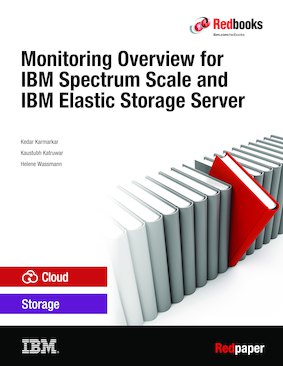Abstract
IBM® Spectrum Scale is software-defined storage for high-performance, large-scale workloads. IBM Spectrum™ Scale (formerly IBM General parallel file system or GPFS) is a scalable data and file management solution that provides a global namespace for large data sets along with several enterprise features. IBM Spectrum Scale™ is used in clustered environments and provides file protocol (POSIX, NFS, and SMB) and object protocol (Swift and S3) access methods.
IBM Elastic Storage™ Server (ESS) is a software-defined storage system that is built upon proven IBM Power Systems™, IBM Spectrum Scale software, and storage enclosures. ESS allows for capacity scale up or scale out for performance in modular building blocks, which enables sharing for large data sets across workloads with unified storage pool for file, object, and Hadoop workloads. ESS uses erasure coding-based declustered RAID technology that was developed by IBM to rebuild failed disks in few minutes instead of days.
IBM ESS and IBM Spectrum Scale are implemented in scalable environments that are running enterprise workloads. ESS and IBM Spectrum Scale are key components of the enterprise infrastructure. With growing expectations of availability on enterprise infrastructures, monitoring IBM Spectrum Scale, ESS health, and performance is an important function for any IT administrator.
This IBM Redpaper™ publication provides an overview of key parameters and methods of IBM Spectrum Scale and ESS monitoring.
The audience for this document is IT architects, IT administrators, storage administrators, and users who want to learn more about the administration of an IBM Spectrum Scale and ESS system.
This document can be used to monitorfor the environments with IBM Spectrum Scale version 4.2.2.X0 or later. The examples in the document are based on IBM Spectrum Scale 4.2.2.X and ESS 5.0.X.X versions.
Table of Contents
Chapter 1. Health monitoring overview
Chapter 2. Health monitoring methods
Chapter 3. Performance monitoring
